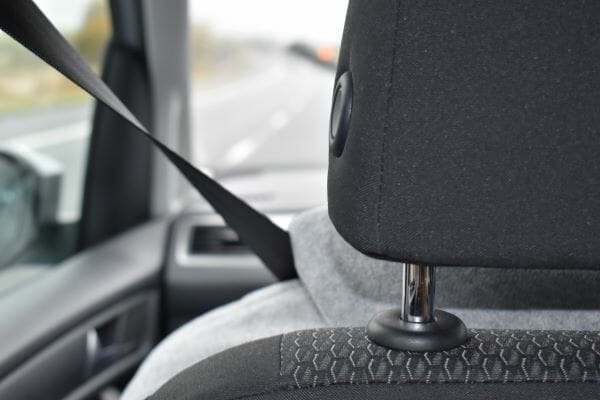With automotive technology advancing at such a rapid rate, each and every year we’re inundated with the latest and greatest in-car innovations. From helping drivers to stay safe and alert to simply adding more convenience, these technologies are making it easier to be behind the wheel. But what highlights can we expect to see this year? We take a look at three examples of technology that create smart driving innovations in 2023.

Heated Seat Belts
Before you dismiss heated seat belts as nothing more than a tacky gimmick, it’s actually being suggested that they can be extremely beneficial to the overall driving experience. Manufacturing company ZF claims that by utilizing heated seat belts in electric cars rather than switching on the heating, drivers could see a 15% increase in the range of their vehicle, allowing them to go further between charges and ultimately improving cold-weather performance.
ZF claims that the improvements in vehicle range are brought about by reducing the amount of energy that’s required to heat a car, as the seat belts are able to transfer heat more efficiently to drivers and passengers. Widespread industry-wide adoption of the technology remains a little way off, but it’s likely we will see it being used more in new designs this year.
Electric Technology Improvements
Over the past decade or so, electric cars have been slowly taking up a larger portion of the pie when it comes to new car sales, with modern eco-conscious drivers eager to play their part in the world’s ongoing plight against climate change. But not everyone has been so receptive to the technology, and there remains a large part of society that is skeptical of the idea of ditching petrol power for electricity.
But as manufacturers direct more of their resources into developing electric fleets, many of the long-standing concerns are being addressed and overcome. Longer battery life, improved fast-charging technology and cutting-edge internal systems are all areas that are being focused on by manufacturers. In 2023, we can expect to see the upward trend in EV adoption continue, with all of these improvements ultimately helping to lower the barriers for consumers.
Artificial Intelligence
Artificial intelligence (AI) is becoming more entwined with many different aspects of everyday life, and lots of different industries are capitalizing on the latest advancements. Car manufacturers are no different, with AI popping up in an increasing number of vehicles, and being used in more ways than ever before. On the surface, the average driver of a mid-range hatchback might feel they don’t need AI or that they wouldn’t see any benefits. But as technology continues to advance, manufacturers are integrating AI into car systems in innovative ways that will benefit everyone – all with the intention of making driving easier.
For example, voice recognition is nothing new, but this year many automotive companies are ramping up efforts to improve these internal systems. Improved functionality means in-car voice recognition in many models can now be used in a similar way to Amazon’s Alexa or Apple’s Siri, and respond to simple commands. These features ensure drivers can focus on the road instead of reaching for a mobile phone, or fiddling with dials to change the temperature.
Experts predict that this particular AI function is here to stay, with estimations suggesting that 90% of new vehicles sold across the world in 2028 will include a voice assistant as standard.
Smart Driving Innovations Keep Us Going
It’s clear that technology is going to play an intrinsic role in the future of the automotive industry, as manufacturers seek modern solutions to long-standing problems. From the production process through to being used on the roads, cars in 2023 will be leaning more heavily on the latest technology to improve performance, and ultimately make driving a safer and more enjoyable experience.
Luxury features continue to change too. Don’t miss our post on the top luxury features offered in cars.
Guest Post Author: Alex Ross
Since acquiring his degree in mechanical engineering, Alex has gone on to apply his trade in several different roles within the automotive industry. He has also used his expertise to create content for international brands, and always aims to inform and inspire his readers to get the most out of their driving experience.
Leave a Reply